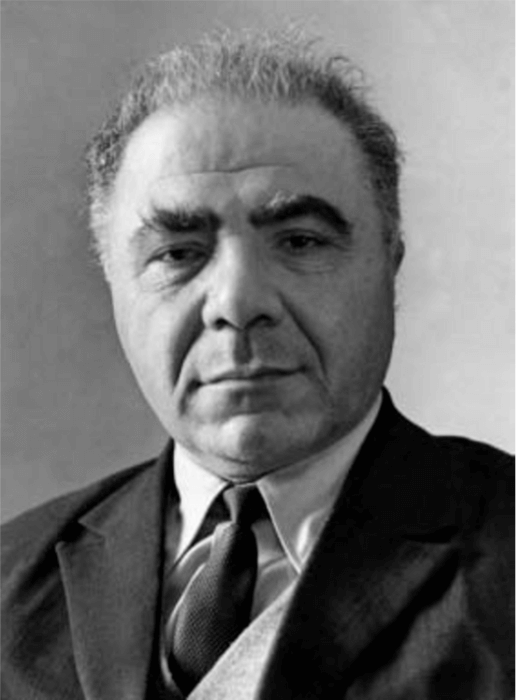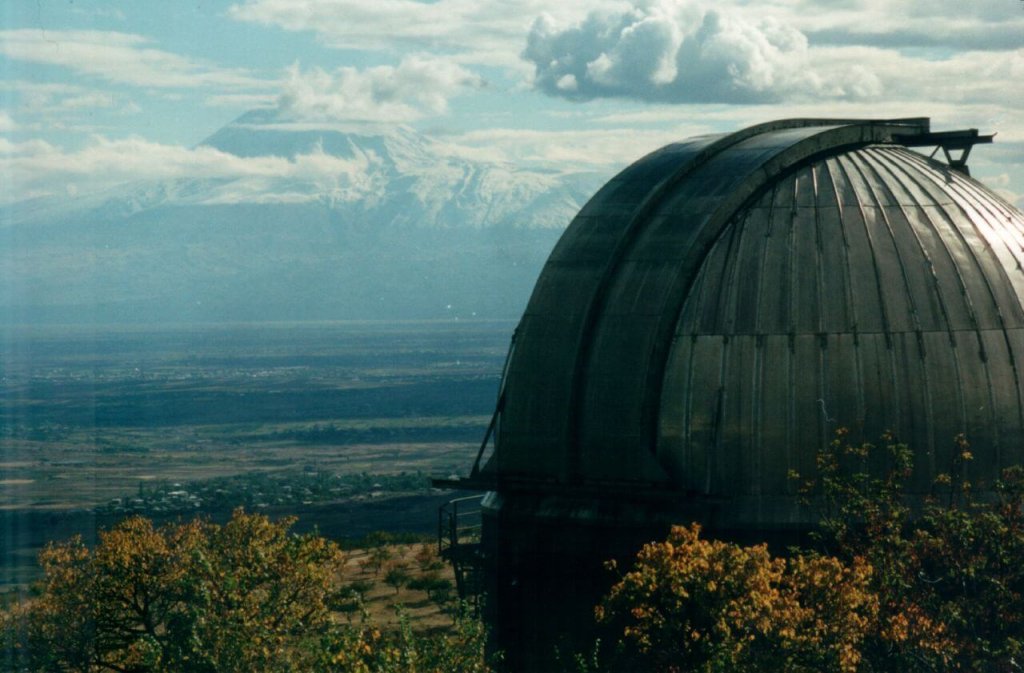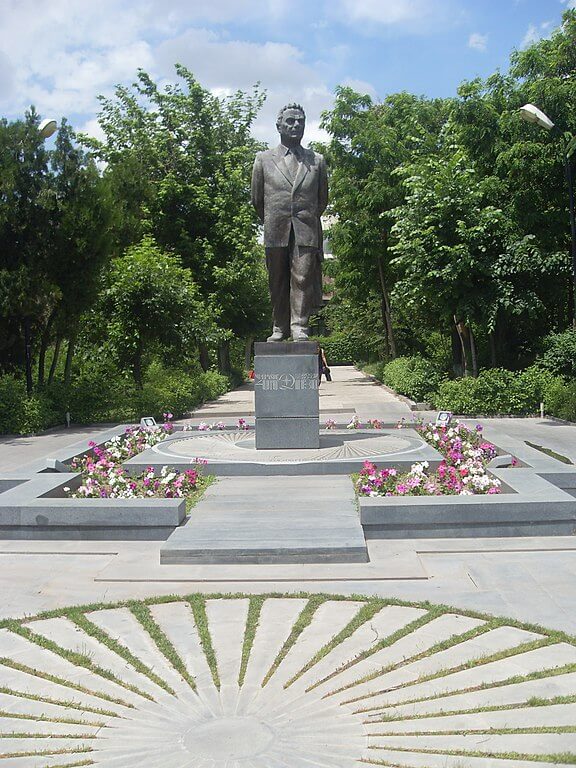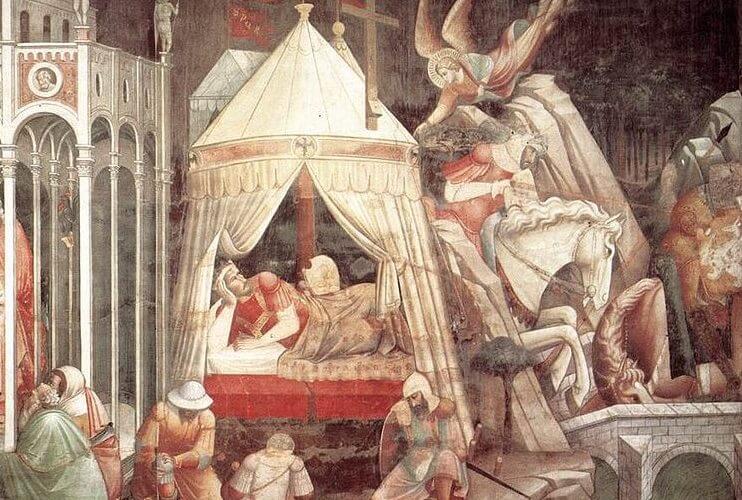Viktor Hambartsumyan (1908–1996) is known as one of the most influential Armenian scientists and a pioneer in astrophysics. Known for his groundbreaking theories on star formation and stellar systems, he established Armenia as a center for astronomical research. As the founder of Byurakan Observatory and the driving force behind the development of astrophysics in the Soviet Union, Hambartsumyan’s legacy continues to impact Armenian science and international astronomy.
Early Life and Education

Viktor Hambartsumyan was born in 1908 in Tiflis, Georgia (now Tbilisi), into an academic family. His father, Hamazasp Hambartsumyan, was a lawyer, educator, and poet who encouraged Viktor’s academic interests from an early age. By the time Viktor was four, he was already performing complex mathematical calculations, thanks to his father’s unique teaching methods. His passion for math and science only grew, leading him to pursue advanced studies.
Hambartsumyan’s academic journey took him to Leningrad University, where he excelled in his studies in mathematics and physics, eventually specializing in astrophysics. His talents earned him positions at the university, where he would go on to make his first major contributions to astronomy.
Academic Career and Early Achievements
After completing his studies, Hambartsumyan quickly made a name for himself in the scientific community. In the 1930s, he joined Leningrad University as a professor, where he founded the Soviet Union’s first Department of Astrophysics. As an educator, he was known for his deep insights and passion for research, inspiring many students to pursue astrophysics.
Hambartsumyan’s early research focused on stellar systems and star clusters, leading to significant discoveries about the structure and behavior of stars. During this time, he published groundbreaking papers that gained international recognition, laying the foundation for modern studies of star formation.
Founding of Byurakan Observatory

In 1946, Hambartsumyan established the Byurakan Astrophysical Observatory (BAO) on the southern slope of Mount Aragats near the village of Byurakan in Armenia. BAO became one of the most important observatories in the Soviet Union, thanks to Hambartsumyan’s leadership and vision. The observatory attracted leading scientists and was equipped with advanced telescopes, including the renowned 1m Schmidt Telescope, one of the largest of its kind.
Hambartsumyan’s decision to establish BAO in Armenia marked a turning point, bringing Armenia into the global scientific community and enabling major discoveries in the field of astrophysics. The observatory remains active today, continuing his work and welcoming scientists from around the world.
Scientific Contributions and Discoveries
Hambartsumyan’s research has had a lasting impact on astrophysics, with many of his theories and discoveries still studied today. His key contributions include:
Star Clusters and Stellar Systems: Hambartsumyan developed theories on the life cycles and gradual decay of star clusters, which changed how scientists understood stellar evolution. His work provided new ways of calculating the ages of star clusters and helped identify key patterns in star formation.
Formation of Stars and Galaxies: One of Hambartsumyan’s most influential ideas was that stars and galaxies form from superdense protostars, leading to new research in galactic development. This theory expanded the understanding of how stars are born and how galaxies evolve over time.
Markarian Survey: Hambartsumyan’s team at Byurakan Observatory conducted the First Byurakan Survey (Markarian Survey), led by Benjamin Markarian. This survey identified “Markarian galaxies,” a type of galaxy with a bright nucleus, revealing important details about active galaxies and contributing greatly to galactic classification.
Roles in International Science
Hambartsumyan’s contributions extended well beyond the Soviet Union, influencing global astronomy. He held prominent positions in international science organizations, reflecting his impact on the field:
International Astronomical Union (IAU): Hambartsumyan served as Vice-President of the IAU from 1948 to 1950 and later became President from 1968 to 1972. His leadership strengthened international collaboration in astronomy and raised Armenia’s profile in global science.
International Council of Scientific Unions: As Chairman, Hambartsumyan promoted interdisciplinary research and fostered cooperation between scientific organizations worldwide. His influence helped shape international research standards and encouraged scientific exchange.
His active participation in these organizations and numerous conferences highlighted his commitment to advancing science on a global scale.
Awards and Honors
Hambartsumyan’s achievements were recognized with numerous awards and honors throughout his life:
- USSR State Prizes: He received the USSR State Prizes in 1950 and 1995 for his contributions to science.
- Orders of Lenin: Hambartsumyan was awarded the Order of Lenin five times, a rare and prestigious honor in recognition of his services.
- International Recognition: Hambartsumyan was made an honorary member of various international academies and scientific societies, and received honorary doctorates from universities around the world.
In Armenia, institutions and scientific events have been named in his honor, including the Byurakan Observatory, the Department of Astrophysics at Yerevan State University, and secondary schools.
Legacy and Influence in Armenia

Viktor Hambartsumyan’s legacy in Armenia is profound. He is remembered as a pioneer who introduced Armenia to the world stage of astrophysics and scientific research. His founding of Byurakan Observatory made Armenia a center for astrophysics, attracting scientists from around the globe and encouraging a new generation of Armenian scientists.
Even after his passing in 1996, Hambartsumyan’s influence lives on through the institutions he established, the scientists he trained, and the observatories that continue his work. Byurakan Observatory, in particular, remains one of the most active scientific institutions in Armenia, with its impact visible in Armenia’s scientific culture and education.

Conclusion
Viktor Hambartsumyan’s contributions to science are unparalleled in Armenian history. As a visionary astrophysicist and a leader in global science, his work laid the groundwork for modern astrophysics and inspired generations of scientists. Hambartsumyan’s legacy as a scientist, educator, and leader lives on, not only in Armenia but in the broader world of astronomy.
Frequently Asked Questions about Viktor Hambartsumyan
What are Viktor Hambartsumyan’s major contributions to science?
Hambartsumyan’s key contributions include his theories on star clusters, his studies on the formation of stars and galaxies, and his leadership in the First Byurakan Survey, which discovered Markarian galaxies.
Why is Viktor Hambartsumyan important in Armenian science?
Hambartsumyan is seen as the father of Armenian astrophysics. His establishment of Byurakan Observatory and his work in global scientific organizations helped Armenia gain recognition in the field of astronomy.
What positions did Viktor Hambartsumyan hold in international science?
Hambartsumyan served as Vice-President and President of the International Astronomical Union and held leadership roles in the International Council of Scientific Unions, promoting international scientific collaboration.
What awards did Viktor Hambartsumyan receive?
Hambartsumyan received the USSR State Prizes, five Orders of Lenin, and honorary memberships in academies worldwide. He was also awarded many international honorary degrees.
What is the Markarian Survey?
The Markarian Survey, or First Byurakan Survey, led by Hambartsumyan’s team, identified active galaxies known as Markarian galaxies, a significant discovery in galactic research.




